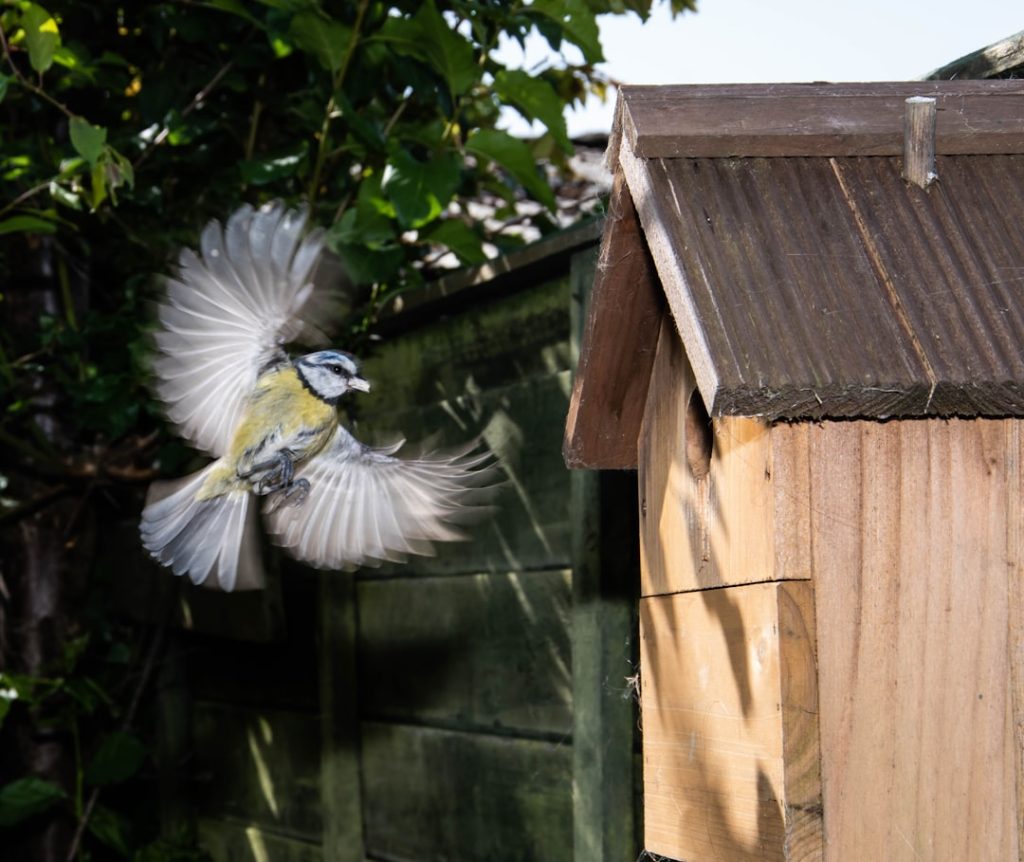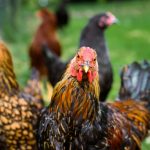Broodiness is a natural behavior in hens characterized by a strong urge to incubate eggs. This instinct is triggered by hormonal changes and manifests through specific behaviors such as reluctance to leave the nest, puffed-up feathers, and aggressive responses when approached. Recognizing and understanding broody behavior is essential for proper hen management and ensuring the well-being of both the hen and her eggs.
During the broody period, a hen spends the majority of her time on the nest, only leaving for brief periods to eat, drink, and defecate. This behavior is driven by the instinct to hatch and rear chicks. Broody hens become highly protective of their nests and may peck or attack perceived threats.
Broodiness typically lasts around 21 days, which corresponds to the average incubation period for chicken eggs. Throughout this time, the hen’s body temperature increases, and she regulates the eggs’ temperature by sitting on them and adjusting her position as necessary. Understanding these behaviors is crucial for providing appropriate care and support to broody hens during this phase.
Table of Contents
Key Takeaways
- Broody hens exhibit nesting behavior and may become aggressive when disturbed
- Proper nutrition and a comfortable environment are essential for broody hens
- Disturbance techniques such as gently moving the hen or providing a separate nesting area can help break broodiness
- Collecting eggs frequently can discourage broody behavior in hens
- Artificial lighting can help regulate the hens’ reproductive cycle and reduce broodiness
- Adequate ventilation is important for the overall health of the hens
- Seek professional advice from a veterinarian or experienced poultry farmer for specific concerns about broody hens
Providing Proper Nutrition and Environment
Nutrition for Broody Hens
Broody hens tend to eat and drink less than usual, so it’s crucial to offer them high-quality feed rich in nutrients to support their health and the development of the eggs.
Creating a Suitable Environment
Providing a quiet and secluded nesting area will help the hen feel secure and comfortable as she sits on her clutch of eggs. Ensuring that the nesting area is clean and free from drafts is also vital in providing a suitable environment for broody hens. A clean nesting area will help prevent the eggs from becoming soiled and reduce the risk of contamination. Additionally, keeping the nesting area free from drafts will help maintain a stable temperature, which is crucial for the development of the eggs.
Supporting Successful Incubation
By providing proper nutrition and a suitable environment, you can support the health and well-being of broody hens and increase the likelihood of successful egg incubation.
Implementing Disturbance Techniques

While broodiness is a natural behavior for hens, there are times when it may be necessary to discourage this behavior, especially if you do not want the hen to hatch eggs or if it is negatively impacting her health. Implementing disturbance techniques can help break the broody cycle and encourage the hen to return to normal behavior. One effective technique is to physically remove the hen from the nest several times a day.
Gently lifting her from the nest and placing her in a separate area with food and water will disrupt her broody behavior and discourage her from returning to the nest. Another technique is to provide a less comfortable nesting area by removing any soft bedding or replacing it with materials that are less conducive to broodiness, such as straw or shavings. It’s important to note that implementing disturbance techniques should be done with care and consideration for the hen’s well-being.
It’s essential to monitor the hen closely and ensure that she continues to eat, drink, and exhibit normal behavior. If the broodiness persists despite these techniques, seeking professional advice may be necessary to address the issue.
Collecting Eggs Frequently
One way to discourage broodiness in hens is to collect eggs frequently from the nesting area. Allowing eggs to accumulate in the nest can trigger broody behavior as the hen becomes more determined to incubate a larger clutch of eggs. By collecting eggs frequently, you can prevent the hen from becoming overly attached to a large number of eggs and reduce the likelihood of broodiness.
Collecting eggs frequently also helps prevent the eggs from becoming soiled or damaged, which can affect their viability for hatching. It’s important to handle the eggs carefully when collecting them to avoid cracking or breaking them. Additionally, storing collected eggs in a cool, dry place will help preserve their freshness and increase the likelihood of successful incubation if desired.
By implementing a routine for collecting eggs frequently, you can help discourage broodiness in hens and maintain the quality of the eggs for consumption or incubation.
Using Artificial Lighting
Artificial lighting can be used as a tool to discourage broodiness in hens by disrupting their natural light-dark cycle. Broodiness is often triggered by an increase in daylight hours, which signals to the hen that it is an optimal time for hatching eggs. By using artificial lighting to extend the daylight hours in the coop, you can disrupt this natural cycle and discourage broodiness in hens.
It’s important to gradually introduce artificial lighting to mimic natural daylight patterns and avoid sudden changes that can stress the hens. Using a timer to control the lighting schedule can help maintain consistency and ensure that the hens are exposed to extended daylight hours each day. Additionally, providing a period of darkness for rest is essential for the overall health and well-being of the hens.
While artificial lighting can be an effective tool for discouraging broodiness, it’s important to monitor the hens closely for any signs of stress or discomfort. If broodiness persists despite using artificial lighting, seeking professional advice may be necessary to address the issue.
Providing Adequate Ventilation

Why Ventilation Matters
Proper ventilation is crucial for maintaining a healthy environment for broody hens and preventing issues such as heat stress or respiratory problems. Adequate ventilation helps regulate temperature, remove excess moisture, and provide fresh air circulation in the coop, which is essential for supporting the health and well-being of broody hens.
Striking a Balance
When providing ventilation for broody hens, it’s essential to ensure a balance between airflow and protection from drafts. Ventilation openings should be positioned to allow for air exchange without creating direct drafts on the nesting area. Adjustable vents or windows can help regulate airflow based on seasonal changes in temperature and humidity.
Maintenance and Bedding
Regularly monitoring the ventilation in the coop and making adjustments as needed will help maintain a comfortable environment for broody hens. Additionally, it’s vital to keep bedding materials clean and dry to prevent moisture buildup, which can lead to respiratory issues for both the hens and developing embryos.
Seeking Professional Advice
If you are experiencing challenges with managing broody hens or are unsure about how to best support their care, seeking professional advice from a veterinarian or experienced poultry keeper can provide valuable guidance and support. A professional can assess the specific needs of your flock and provide tailored recommendations for managing broodiness and maintaining the health and well-being of your hens. Professional advice may be particularly beneficial if you are considering using artificial lighting or implementing disturbance techniques to discourage broodiness.
A professional can offer insights into best practices for these methods and help you develop a plan that aligns with the needs of your flock. Additionally, seeking professional advice can help address any underlying health issues that may be contributing to broodiness in hens. A veterinarian can conduct a thorough assessment of your flock and provide recommendations for addressing any health concerns that may be impacting their behavior.
In conclusion, understanding the behavior of broody hens is essential for providing proper care and support during this natural phase. By implementing appropriate nutrition, environment, disturbance techniques, egg collection practices, artificial lighting, ventilation, and seeking professional advice when needed, you can effectively manage broodiness in hens and promote their overall health and well-being.
If you’re looking for tips on how to keep chickens from setting, you might also be interested in learning about what to feed ducks. Check out this informative article on what you should feed ducks to ensure they stay healthy and happy.
FAQs
What is setting in chickens?
Setting in chickens refers to the act of a hen sitting on her eggs in order to incubate them and eventually hatch them into chicks.
Why do some chicken owners want to prevent setting in their hens?
Some chicken owners may want to prevent setting in their hens because they may not want to have more chicks, or they may want to control the timing of when their hens lay eggs.
How can chicken owners prevent setting in their hens?
Chicken owners can prevent setting in their hens by regularly collecting eggs from the nesting boxes, providing fake or ceramic eggs in the nesting boxes to discourage setting, and keeping the nesting boxes clean and uninviting for setting.
Are there any health risks associated with preventing setting in chickens?
Preventing setting in chickens does not pose any direct health risks to the hens. However, it is important to ensure that the hens have a comfortable and stress-free environment to prevent any negative impact on their overall health and well-being.
Meet Walter, the feathered-friend fanatic of Florida! Nestled in the sunshine state, Walter struts through life with his feathered companions, clucking his way to happiness. With a coop that’s fancier than a five-star hotel, he’s the Don Juan of the chicken world. When he’s not teaching his hens to do the cha-cha, you’ll find him in a heated debate with his prized rooster, Sir Clucks-a-Lot. Walter’s poultry passion is no yolk; he’s the sunny-side-up guy you never knew you needed in your flock of friends!







